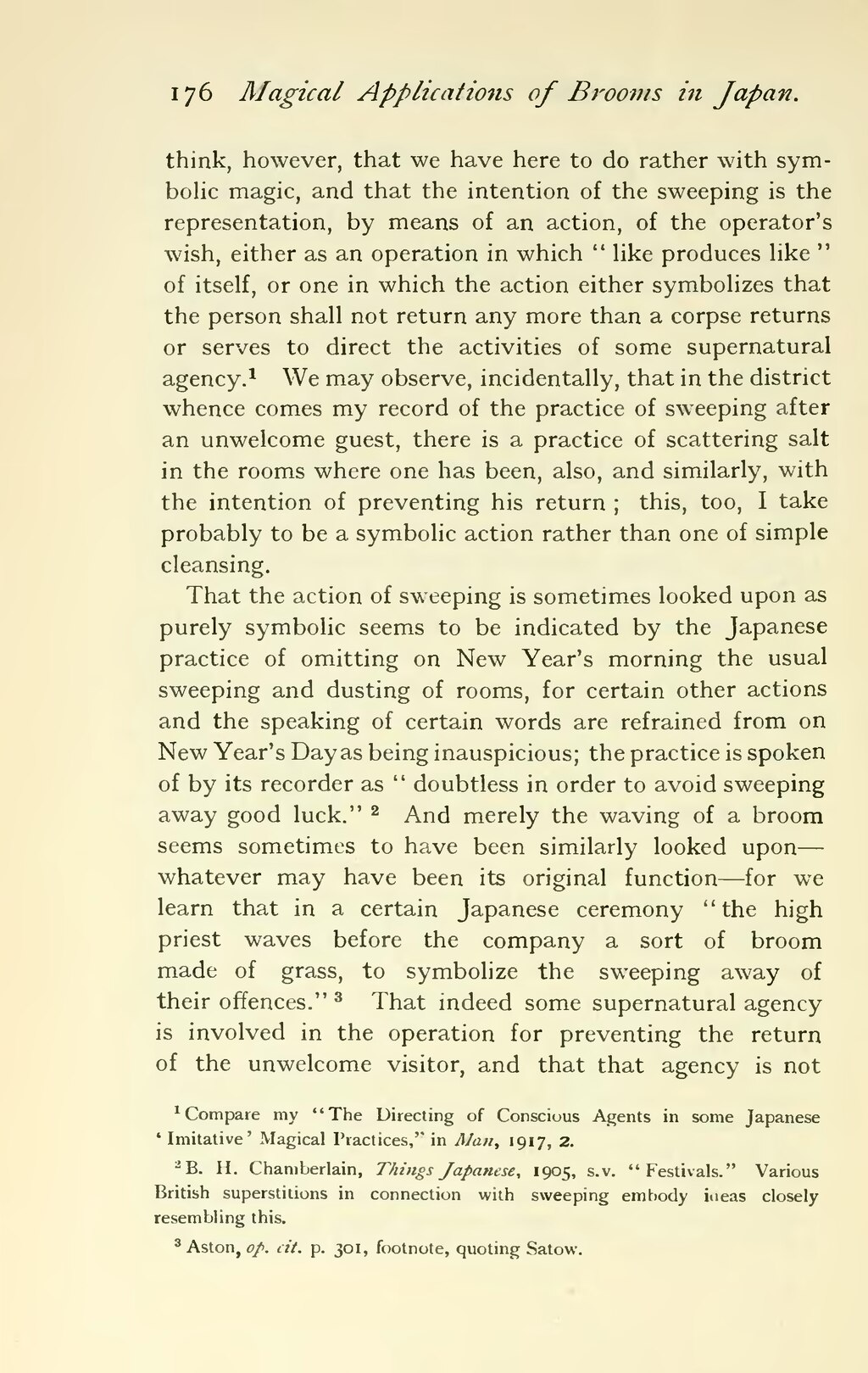think, however, that we have here to do rather with symbolic magic, and that the intention of the sweeping is the representation, by means of an action, of the operator's wish, either as an operation in which "like produces like" of itself, or one in which the action either symbolizes that the person shall not return any more than a corpse returns or serves to direct the activities of some supernatural agency.[1] We may observe, incidentally, that in the district whence comes my record of the practice of sweeping after an unwelcome guest, there is a practice of scattering salt in the rooms where one has been, also, and similarly, with the intention of preventing his return; this, too, I take probably to be a symbolic action rather than one of simple cleansing.
That the action of sweeping is sometimes looked upon as purely symbolic seems to be indicated by the Japanese practice of omitting on New Year's morning the usual sweeping and dusting of rooms, for certain other actions and the speaking of certain words are refrained from on New Year's Day as being inauspicious; the practice is spoken of by its recorder as "doubtless in order to avoid sweeping away good luck."[2] And merely the waving of a broom seems sometimes to have been similarly looked upon—whatever may have been its original function—for we learn that in a certain Japanese ceremony "the high priest waves before the company a sort of broom made of grass, to symbolize the sweeping away of their offences."[3] That indeed some supernatural agency is involved in the operation for preventing the return of the unwelcome visitor, and that that agency is not
- ↑ Compare my "The Directing of Conscious Agents in some Japanese 'Imitative' Magical Practices," in Man, 1917, 2.
- ↑ B. H. Chamberlain, Things Japanese, 1905, s.v. "Festivals." Various British superstitions in connection with sweeping embody ideas closely resembling this.
- ↑ Aston, op. cit. p. 301, footnote, quoting Satow.
